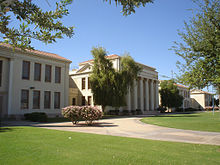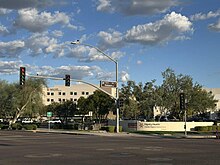

Informed consent is a crucial aspect of medical and research ethics that ensures individuals have a full understanding of the risks and benefits associated with a particular treatment or study before agreeing to participate. Informed consent laws are in place to protect the rights and autonomy of individuals by requiring healthcare providers and researchers to obtain explicit permission from patients or participants after providing them with all necessary information.
The process of obtaining informed consent involves explaining the purpose of the treatment or study, disclosing any potential risks or side effects, outlining alternative options, and ensuring that the individual fully comprehends what they are agreeing to. This allows individuals to make an informed decision about their own healthcare and well-being based on their personal values and preferences.
Informed consent laws also require that individuals have the right to withdraw their consent at any time without facing repercussions. This ensures that individuals maintain control over their own bodies and decisions throughout the course of treatment or participation in a study.
Overall, informed consent laws play a vital role in upholding ethical standards within the medical and research fields by prioritizing individual autonomy, transparency, and respect for human dignity. By ensuring that individuals are fully informed before making decisions about their health, these laws help to protect both patients' rights and the integrity of scientific research.
Informed consent laws serve a crucial purpose in ensuring that individuals are fully aware of the risks and benefits of any medical treatment or procedure before they agree to it. These laws require healthcare providers to disclose all relevant information to their patients, including potential side effects, alternative treatments, and the likelihood of success.
By obtaining informed consent, patients are able to make informed decisions about their own healthcare and have the opportunity to ask questions and seek clarification on any aspect of their treatment. This not only empowers patients to take an active role in their care but also helps to build trust between patients and healthcare providers.
Informed consent laws also serve to protect individuals from being subjected to unnecessary or harmful treatments without their knowledge or consent. By requiring healthcare providers to obtain explicit permission from their patients before proceeding with any treatment, these laws help ensure that patients' rights are respected and that they are able to make decisions based on accurate and complete information.
Overall, informed consent laws play a vital role in promoting transparency, autonomy, and respect in healthcare settings. By upholding these principles, these laws help to safeguard the well-being and dignity of all individuals seeking medical treatment.

Understanding medical malpractice laws in Chandler is crucial for both healthcare professionals and patients alike.. These laws are in place to protect individuals from negligence or misconduct on the part of medical practitioners, ensuring that they receive the quality care they deserve. In Chandler, medical malpractice laws outline the responsibilities and obligations of healthcare providers, as well as the rights of patients who have been harmed by their actions.
Posted by on 2024-11-18

If you believe that you have been a victim of medical malpractice, it can be a confusing and overwhelming experience.. It is important to take certain steps to protect your rights and seek justice for any harm that may have been caused by negligent medical care. The first step you should take if you suspect medical malpractice is to gather all relevant documentation related to your medical treatment.
Posted by on 2024-11-18

Choosing the right medical malpractice lawyer in Chandler can be a daunting task, but it is crucial to ensure that you receive the best possible representation for your case.. With so many options available, it's important to take the time to research and find a lawyer who has the knowledge and experience needed to handle your specific situation. One of the first things to consider when selecting a medical malpractice lawyer is their experience in handling similar cases.
Posted by on 2024-11-18

Medical malpractice cases can take many forms, but there are several common types that we see in Chandler and throughout the healthcare system.. These cases often involve a breach of the standard of care that a healthcare provider is expected to provide to their patients. One common type of medical malpractice case is misdiagnosis or delayed diagnosis.
Posted by on 2024-11-18
In order to ensure that individuals are fully aware of the potential risks and benefits associated with participating in a research study or medical procedure, informed consent laws have been put in place. These laws outline the requirements that must be met before a person can provide informed consent.
One of the key requirements for obtaining informed consent is that the individual must be provided with all relevant information about the study or procedure. This includes details about the purpose of the study, any potential risks or side effects, and what will be expected of them if they choose to participate. The individual must also be given ample time to ask questions and seek clarification on any points they do not understand.
Another important requirement is that the individual must be deemed to have decision-making capacity. This means that they must be able to understand the information provided to them, weigh the risks and benefits, and make an informed decision based on this information. If a person is found to lack decision-making capacity, they cannot provide informed consent.
Additionally, individuals must provide their consent voluntarily, without any coercion or pressure from others. They should feel free to decline participation in a study or procedure without fear of reprisal or negative consequences.
Overall, informed consent laws are designed to protect individuals by ensuring that they have all the information they need to make an informed decision about their participation in research studies or medical procedures. By meeting these requirements, researchers and healthcare providers can help ensure that individuals are treated ethically and with respect.

Informed consent laws are put in place to protect patients and ensure they have all the necessary information before making decisions about their medical care. However, there are certain exceptions to these requirements that allow healthcare providers to proceed with treatment without obtaining explicit consent from the patient.
One common exception is in cases of emergency situations where immediate treatment is necessary to save a patient's life or prevent serious harm. In these instances, healthcare providers may bypass the informed consent process in order to provide timely and potentially life-saving interventions.
Another exception is when a patient lacks the capacity to make informed decisions due to factors such as mental illness, cognitive impairment, or being under the influence of drugs or alcohol. In these cases, healthcare providers may seek consent from a legally authorized representative, such as a family member or guardian, in order to proceed with treatment.
Additionally, there are exceptions for certain types of research studies where obtaining informed consent may not be feasible or practical. In these cases, researchers must follow strict ethical guidelines and obtain approval from an institutional review board before proceeding with the study.
While exceptions to informed consent requirements are necessary in certain circumstances, it is important for healthcare providers to always prioritize patient autonomy and respect their right to make informed decisions about their care whenever possible. By balancing these considerations, healthcare professionals can ensure that patients receive appropriate treatment while upholding ethical standards and protecting their rights.
In healthcare settings, the importance of informed consent cannot be overstated. Informed consent laws are in place to protect patients' autonomy and ensure that they have all the necessary information to make decisions about their own medical care.
When patients are fully informed about their treatment options, potential risks, and benefits, they are better equipped to make decisions that align with their values and preferences. Informed consent empowers patients to actively participate in their healthcare decisions and fosters a sense of trust between patients and healthcare providers.
Furthermore, informed consent laws help prevent instances of medical malpractice or negligence by holding healthcare providers accountable for obtaining proper consent before administering treatment. This not only protects patients from unnecessary harm but also upholds ethical standards within the healthcare industry.
Overall, informed consent laws play a crucial role in promoting patient-centered care and ensuring that individuals have the right to make informed choices about their health. By respecting patients' autonomy and providing them with the information they need to make decisions, healthcare providers can uphold ethical principles and foster positive relationships with those under their care.
Informed consent laws are designed to protect individuals by ensuring they are fully informed about medical procedures or research studies before agreeing to participate. However, these laws can also present challenges and controversies that need to be carefully considered.
One challenge is the issue of comprehension. Not everyone may fully understand the information presented to them, especially if it is complex or technical in nature. This could lead to individuals giving consent without truly understanding the risks and benefits involved. In some cases, language barriers or cognitive impairments may further complicate matters, making it difficult for individuals to make informed decisions.
Another challenge is the potential for coercion or manipulation. In some situations, individuals may feel pressured to give their consent due to external factors such as financial incentives or social pressure. This can undermine the voluntariness of their decision-making process and raise ethical concerns about whether their consent is truly informed.
Furthermore, there may be controversies surrounding who has the authority to provide consent on behalf of others, such as minors or individuals with diminished capacity. Determining who can act as a legally authorized representative in these situations can be a complex and contentious issue, particularly when there are conflicting interests at play.
Overall, while informed consent laws play a crucial role in protecting individuals' autonomy and rights, they also pose challenges and controversies that must be carefully navigated. It is important for policymakers, healthcare professionals, and researchers to continually evaluate and refine these laws to ensure that they effectively uphold ethical standards and promote genuine informed decision-making.
Chandler, Arizona | |
|---|---|
City | |
 Aerial view of Chandler | |
 Location in Maricopa County, Arizona | |
| Coordinates: 33°18′N 111°50′W / 33.300°N 111.833°W | |
| Country | United States |
| State | |
| County | Maricopa |
| Founded | May 17, 1912 |
| Government | |
| • Type | Council-Manager |
| • Mayor | Kevin Hartke[1] |
| Area | |
| • City | 65.55 sq mi (169.77 km2) |
| • Land | 65.48 sq mi (169.58 km2) |
| • Water | 0.07 sq mi (0.18 km2) |
| Elevation | 1,211 ft (370 m) |
| Population (2020)[2] | |
| • City | 275,987 |
| • Estimate (2022)[2] | 280,711 |
| • Rank | US: 78th |
| • Density | 4,226.4/sq mi (1,627.45/km2) |
| • Metro | 4,948,203 |
| • Demonym | Chandlerite |
| Time zone | UTC−7 (MST (no DST)) |
| ZIP Codes | 85224, 85225, 85226, 85286, 85248, 85249 |
| Area code | 480 |
| FIPS code | 04-12000 |
| GNIS feature ID | 2409433[3] |
| Website | www |
Chandler is a city in Maricopa County, Arizona, United States, and a suburb in the Phoenix-Mesa-Chandler Metropolitan Statistical Area. It is the fourth-most populous city in Arizona, after Mesa, Tempe, and Phoenix. Chandler is considered to be a part of the East Valley.
As of the 2020 census, the population of Chandler was 275,987,[2] up from 236,123 at the 2010 census.[4] Chandler is a commercial and tech hub for corporations like Intel, Northrop Grumman, Wells Fargo, PayPal and Boeing.
In 1891, Dr. Alexander John Chandler, a Canadian and the first veterinary surgeon in the Arizona Territory, settled on a ranch south of Mesa and studied irrigation engineering. By 1900, he had acquired 18,000 acres (73 km2) of land and began drawing up plans for a town-site on what was then known as the Chandler Ranch. The town-site office opened on May 16, 1912.
The original town-site was bounded by Galveston Street to the north, Frye Road to the south, Hartford Street to the west, and Hamilton Street to the east.[5] By 1913, a town center was established, featuring the Hotel San Marcos, which also had the first grass golf course in the state. Chandler High School was established in 1914. Chandler was officially incorporated on February 16, 1920, after 186 residents petitioned the Maricopa County Board of Supervisors to approve incorporation.[citation needed]
Most of Chandler's economy was sustained during the Great Depression (though the Depression was to blame for the cancellation of a second San Marcos hotel), but the cotton crash a few years later had a much deeper impact on the city's residents. A. J. Chandler lost his San Marcos hotel to creditors as a result.[6] Later, the founding of Williams Air Force Base in 1941 led to a small surge in population, but Chandler still only held 3,800 people by 1950.[citation needed]
By 1980, the population had grown to 30,000, and it has since paced the Phoenix metropolitan area's high rate of growth, with suburban residential areas and commercial use areas swallowing former agricultural plots. The population has nearly doubled in the last twenty years. Some of this growth was fueled by the establishment of manufacturing plants for communications and computing firms such as Microchip, Motorola and Intel.
According to the 2020 census, Chandler has a total area of 65.55 square miles (169.8 km2), of which 0.07 square miles (0.18 km2), or 0.11%, are listed as water.[2] The center of the city, along Arizona State Route 87, is 22 miles (35 km) southeast of Downtown Phoenix.
Chandler is in proximity to/borders the San-Tan mountain range. The San-Tan mountains are in the jurisdiction of the Gila River Indian Community.
Chandler is divided into three parts: North Chandler, West Chandler and South Chandler, each being divided by the Loop 202 (Santan Freeway) and Loop 101 (Price Freeway).
| Climate data for Chandler, AZ | |||||||||||||
|---|---|---|---|---|---|---|---|---|---|---|---|---|---|
| Month | Jan | Feb | Mar | Apr | May | Jun | Jul | Aug | Sep | Oct | Nov | Dec | Year |
| Record high °F (°C) | 89 (32) |
95 (35) |
99 (37) |
106 (41) |
118 (48) |
116 (47) |
119 (48) |
115 (46) |
113 (45) |
107 (42) |
97 (36) |
86 (30) |
119 (48) |
| Mean daily maximum °F (°C) | 67 (19) |
71 (22) |
77 (25) |
85 (29) |
94 (34) |
104 (40) |
106 (41) |
104 (40) |
99 (37) |
89 (32) |
75 (24) |
67 (19) |
87 (30) |
| Daily mean °F (°C) | 54 (12) |
58 (14) |
63 (17) |
70 (21) |
78 (26) |
87 (31) |
92 (33) |
90 (32) |
85 (29) |
74 (23) |
61 (16) |
54 (12) |
72 (22) |
| Mean daily minimum °F (°C) | 41 (5) |
45 (7) |
49 (9) |
54 (12) |
61 (16) |
70 (21) |
77 (25) |
76 (24) |
70 (21) |
59 (15) |
47 (8) |
40 (4) |
57 (14) |
| Record low °F (°C) | 15 (−9) |
19 (−7) |
24 (−4) |
30 (−1) |
37 (3) |
43 (6) |
54 (12) |
51 (11) |
40 (4) |
30 (−1) |
22 (−6) |
17 (−8) |
15 (−9) |
| Average precipitation inches (mm) | 1.01 (26) |
1.03 (26) |
1.19 (30) |
0.33 (8.4) |
0.17 (4.3) |
0.06 (1.5) |
0.89 (23) |
1.14 (29) |
0.89 (23) |
0.81 (21) |
0.77 (20) |
0.98 (25) |
9.20 (234) |
| Source: The Weather Channel[7] | |||||||||||||
| Census | Pop. | Note | %± |
|---|---|---|---|
| 1930 | 1,378 | — | |
| 1940 | 1,239 | −10.1% | |
| 1950 | 3,799 | 206.6% | |
| 1960 | 9,531 | 150.9% | |
| 1970 | 13,763 | 44.4% | |
| 1980 | 29,673 | 115.6% | |
| 1990 | 89,862 | 202.8% | |
| 2000 | 176,581 | 96.5% | |
| 2010 | 236,123 | 33.7% | |
| 2020 | 275,987 | 16.9% | |
| 2022 (est.) | 280,711 | [8] | 1.7% |
| U.S. Decennial Census[9] | |||
| Race / Ethnicity (NH = Non-Hispanic) | Pop 2000[10] | Pop 2010[11] | Pop 2020[12] | % 2000 | % 2010 | % 2020 |
|---|---|---|---|---|---|---|
| White alone (NH) | 121,168 | 145,724 | 147,119 | 68.62% | 61.72% | 53.31% |
| Black or African American alone (NH) | 5,821 | 10,580 | 15,564 | 3.30% | 4.48% | 5.64% |
| Native American or Alaska Native alone (NH) | 1,628 | 2,715 | 3,850 | 0.92% | 1.15% | 1.39% |
| Asian alone (NH) | 7,345 | 19,119 | 32,710 | 4.16% | 8.10% | 11.85% |
| Pacific Islander alone (NH) | 222 | 365 | 571 | 0.13% | 0.15% | 0.21% |
| Some Other Race alone (NH) | 301 | 369 | 1,237 | 0.17% | 0.16% | 0.45% |
| Mixed Race or Multi-Racial (NH) | 3,037 | 5,443 | 12,679 | 1.72% | 2.31% | 4.59% |
| Hispanic or Latino (any race) | 37,059 | 51,808 | 62,257 | 20.99% | 21.94% | 22.56% |
| Total | 176,581 | 236,123 | 275,987 | 100.00% | 100.00% | 100.00% |
As of the 2022[update] American Community Survey estimates, there were 280,684 people and 106,712 households.[13][14] The population density was 4,276.2 inhabitants per square mile (1,651.1/km2). There were 113,092 housing units at an average density of 1,722.9 per square mile (665.2/km2).[15][16][14] The racial makeup of the city was 56.0% White, 13.4% Asian, 7.6% Black or African American, 4.4% some other race, 1.0% Native American or Alaskan Native, and 0.1% Native Hawaiian or Other Pacific Islander, with 17.5% from two or more races.[14] Hispanics or Latinos of any race were 21.2% of the population.[14]
Of the 106,712 households, 34.4% had children under the age of 18 living with them, 24.2% had seniors 65 years or older living with them, 50.7% were married couples living together, 7.4% were couples cohabitating, 18.3% had a male householder with no partner present, and 23.6% had a female householder with no partner present.[13] The median household size was 2.61 and the median family size was 3.12.[13]
The age distribution was 23.8% under 18, 8.9% from 18 to 24, 27.9% from 25 to 44, 26.4% from 45 to 64, and 13.0% who were 65 or older. The median age was 37.0 years.[17] For every 100 females, there were 105.8 males.[14]
The median income for a household was $98,664, with family households having a median income of $116,362 and non-family households $66,304. The per capita income was $50,247.[18][19] Out of the 279,322 people with a determined poverty status, 7.6% were below the poverty line. Further, 9.3% of minors and 7.6% of seniors were below the poverty line.[20]
In the survey, residents self-identified with various ethnic ancestries. People of German descent made up 13.0% of the population of the city, followed by Irish at 10.1%, English at 8.5%, American at 5.7%, Italian at 4.5%, Polish at 1.9%, Scottish at 1.7%, French at 1.6%, Arab at 1.5%, Sub-Saharan African at 1.5%, Norwegian at 1.2%, Dutch at 1.1%, Swedish at 1.0%, French Canadian at 0.6%, Russian at 0.6%, Scotch-Irish at 0.5%, and Greek at 0.5%.[13]
Computer chip manufacturer Intel has two locations in Chandler. Other high-technology manufacturing firms have partnerships with Chandler,[21] their operations employing approximately 25% of non-government workers in 2007.[22]
Since 2003, more than 2,900 jobs and investments totalling $3 billion have been created along the Price and Santan freeways,[23] in the Price Road Corridor.[24] The 1,300,000-square-foot (120,000 m2) Chandler Fashion Center, opened in 2001.
Companies headquartered in Chandler include Keap, Microchip, and Rogers. Bashas' headquarters is in a county island surrounded by Chandler.
According to the City of Chandler Economic Development Division,[25] leading employers in the city are:
| # | Employer | # of Employees |
|---|---|---|
| 1 | Intel | 12,000 |
| 2 | Wells Fargo | 5,500 |
| 3 | Chandler Unified School District | 4,900 |
| 4 | Bank of America | 3,600 |
| 5 | Chandler Regional Medical Center / Dignity Health | 2,500 |
| 6 | Northrop Grumman | 2,150 |
| 7 | Chandler–Gilbert Community College | 1,900 |
| 8 | City of Chandler | 1,800 |
| 9 | Microchip Technology (HQ) | 1,700 |
| 10 | NXP Semiconductors | 1,700 |
| 11 | PayPal | 1,500 |
| 12 | Insight Enterprises | 1,400 |
| 13 | Microchip Technology | 1,500 |
| 14 | Verizon | 1,400 |
| 15 | Bashas' (HQ and Distribution Center) | 1,100 |

Chandler holds an annual Ostrich Festival at Tumbleweed Park[26] to commemorate when ostrich farms in the area produced plumes for women's hats during the 1910s.[citation needed]
Chandler also holds an annual ceremony to light a tree made from tumbleweeds; a ceremony founded in 1957 when Chandler sought an alternative way to decorate the city during the Christmas holidays.[27]
Venues, galleries and museums include:
Several sites in Chandler are listed on the National Register of Historic Places, including the McCullough–Price House and the San Marcos Hotel.[30]
The Chandler Public Library serves Chandler and the greater East Valley. The main library is in Downtown Chandler, with two branches elsewhere in the city: Sunset, Basha (shared with Basha High School), and Hamilton (shared with Hamilton High School).

Tumbleweed Park hosts the annual Ostrich Festival, the Fourth of July Fireworks Festival and the annual Day of Play. It features a recreational center with equipment suited for fitness.[31]
Hamilton Aquatic Center is a shared-use aquatic facility, located within Hamilton High School's campus.[32]
Nozomi Aquatic Center is a shared-use aquatic facility which includes a 25 yard, 8-lane competition pool.[33]
Veterans Oasis Park is located at the city's highest point, at 1,311 feet (400 m).[34] It includes a wildlife preservation and designated horse and walking trails.[35]
Chandler is represented by a mayor, a vice mayor and five city council members. The vice mayor is elected by the city council from among its members. The mayor, vice mayor and council members represent the entire city and are not elected from districts or wards.[36]
Kevin Hartke was elected to his second term as mayor in 2023.[36]

The north central section of the city and the western "leg" of the city are within Arizona's 4th congressional district, served by Representative Greg Stanton, a Democrat. The rest of Chandler is within Arizona's 5th congressional district, served by Representative Andy Biggs, a Republican.
Chandler's western "leg" and a small, narrow portion of the adjacent northern part of the city are within Arizona's 18th Legislative District, served by Representatives Denise Epstein and Jennifer Jermaine, and Senator Sean Bowie, all Democrats. The rest of the city is in Arizona's 17th Legislative District, served by Representatives Jennifer Pawlik and Jeff Weninger, and Senator J. D. Mesnard, one Democrat and two Republicans.

Chandler is served by the Chandler Unified School District, Kyrene Elementary School District, Tempe Union High School District, Mesa Public Schools, and Gilbert Public Schools.[citation needed]
Catholic and charter schools include Basis Schools, Seton Catholic Preparatory, and Legacy Traditional Schools.[37]
Post-secondary educational institutions located in Chandler include: The University of Arizona Chandler,[38] International Baptist College, and the two-year Chandler-Gilbert Community College, which serves 13,000 students.[37]
Chandler Municipal Airport is a two-runway general aviation facility. Stellar Airpark is a privately owned municipal airport open to the public.

Chandler is served by three limited access highways:
Chandler is served by two single-track branch lines of the Union Pacific Railroad.
Hospitals in Chandler include Chandler Regional Medical Center, and Banner Ocotillo Medical Center.[40][41]
Chandler has two sister cities:[42]